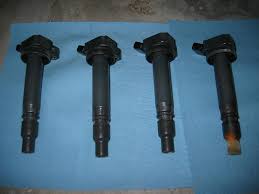Voltage Leaks
Voltage leaks are another common cause of engine performance issues. Voltage leaks are leaks in the ignition system where the spark does not reach the tip of the spark plug. This loss of ignition translates to a misfire on the offending cylinder. Misfires, as we have discussed, can cause a rough-running engine and a loss of performance.
Finding ignition voltage leaks isn’t that hard. Sometimes you can actually hear a voltage leak. Listen for a loud snap that is irregular and might coincide with the miss of the engine. If you don’t hear them right away, don’t worry; this method will help you find any voltage leaks, should you have any. All you need is a spray bottle full of water; if you’re brave, you can turn the lights off during the test. While the engine is running, spray the ignition system with the water. Look for sparks or arching, listen for the snap, or listen for the engine RPM to change in some way as you do this.
Keep in mind that sometimes when doing this you can actually seal a vacuum leak, as mentioned above in the vacuum leak test. Personally I like to look for the light show in the dark, as this makes it easier to see. If you find a voltage leak, replace the parts and recheck for your performance problem. Don’t forget to check the ignition cap and rotor if you have them. If you have a coil-on-plug setup, this method might not work so well. For those, you might remove the coils one by one to inspect them. Look for burned areas or white residue on the coils themselves.
This can indicate a voltage leak. If you find parts in this condition, replace them and recheck for the problem. Here is a video on how to look for voltage leaks.
Video Title: Voltage Leaks – Solving Automotive Performance Issues – EricTheCarGuy Video Description: In this Article, Voltage Leaks, we look at how this can impact Engine Performance. Thumbnail: http://www.ericthecarguy.com/images/faq_buttons/Large_FAQ_Images/Performance-and-Driveability-icon-1200.jpg
 Our Address
Our Address



